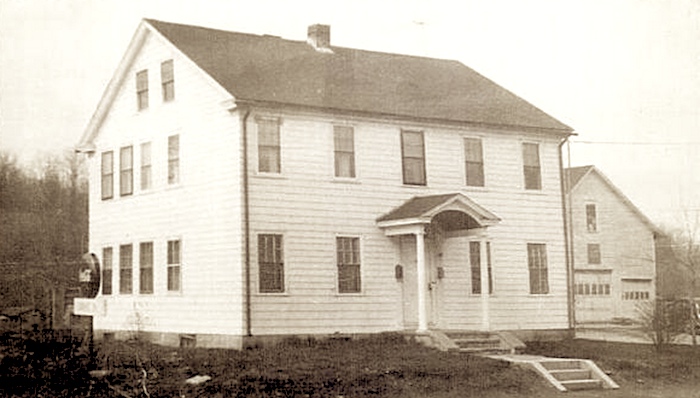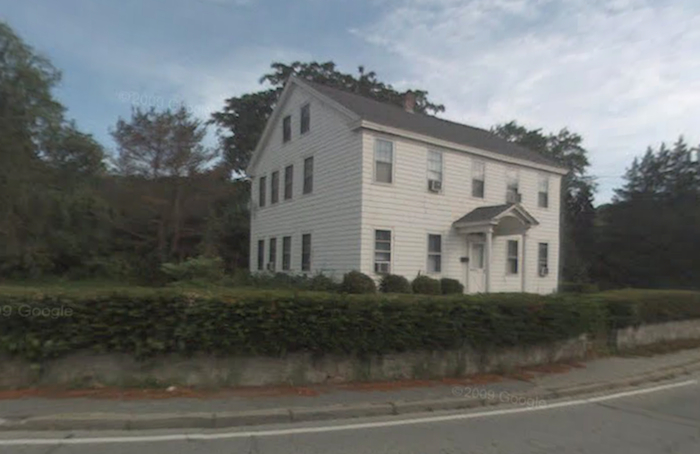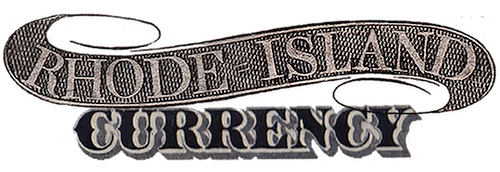Cranston Bank
The Cranston Bank was first established in the village of Knightsville in Cranston. Because of its proximity to A&W Sprague’s large textile mill there, it’s often confused with the Cranston Savings Bank, which was founded by one of the factory’s principals, Amasa Sprague. (For more on the Savings Bank, see The First National Bank of Providence.)
One historian provides these details about the bank:
“In 1818 the General Assembly granted a charter to a bank to be known as the Cranston Bank. It was located in the house of Jeremiah Knight, Esq. on Phenix Avenue, Knightsville. He had been chosen cashier and it was an old English custom for the cashier to live under the same roof as the funds he guarded. Joseph Harris, descendent of William Harris, was made the first president. He was a wealthy farmer and a man prominent in the civic affairs of the town. The capital with which the bank started was $37,500, a pitifully small sum in these days when we count our assets and liabilities in astronomical millions. However, it was adequate for the times, and shares sold for $25…
“Mr. Knight evidently prepared a vault for the safe keeping of the bank property and rented a room in addition to this for general banking purposes. Mr. Roland Cornell, who later occupied the house, told of the coat closet opposite the front door which was presumably the old vault. The iron door of the vault had been replaced by a wooden one. In the back wall of this closet was another smaller wooden door, previously of iron, which led into an inner room or second vault which was four feet square and about room height. Thus did Mr. Knight prepare for the protection of the property of the patrons of the Cranston Bank.
“Jeremiah Knight, with everything to live for, fell victim to the dread disease of that period and in 1821 died of consumption at the age of 45… Upon Mr. Knight’s death he was succeeded by Jesse Howard, a most able man, as cashier of the Cranston Bank he also held the office of town clerk. In 1851, when the People’s Savings Bank in Providence was organized, he was the only one considered for treasurer. It was with modest reluctance that he accepted the position. Providence’s gain was Cranston’s loss. William H. Aldrich, nephew of Jeremiah Knight, took Mr. Howard’s place as the third and last cashier of the Cranston Bank. He, like his predecessors had served as town clerk and was a man of the highest integrity. Soon after he took office the business of the bank was largely diverted owing to the railroad that was built through the section…
“Caleb Congdon succeeded Joseph Harris as president and the bank moved in 1844 to quarters in Job Wilbur’s Tavern at the corner of the present Park Avenue and Cranston Street.” — Alfred Fenner Isham, The Fenner Family. Los Angeles: 1929.
As reported in the New York City newspapers in 1854, well-executed $10 counterfeit notes from the Cranston Bank “flooded” the city and caused quite a panic. Within a week, the culprits were arrested, including one woman named Magdeline Fisher, known as ”The Lady in Black.”
In January, 1850, the Cranston Bank moved to Providence and in May of 1865, it petitioned the state in to move to Olneyville. It appears to have closed its doors shortly thereafter.
Roger Durand, in Obsolete Notes and Scrip of Rhode Island and the Providence Plantations, notes that “this was one of the country banks that had a habit of making high profits out of excessive amounts of circulation and the purchase of its own bills, through its agents, at a discount.”





A vintage photo of “The Bank House,” this institution’s first home at the intersection of Scituate and Phenix Avenues.

A view of the structure today. (From Google Maps.)
